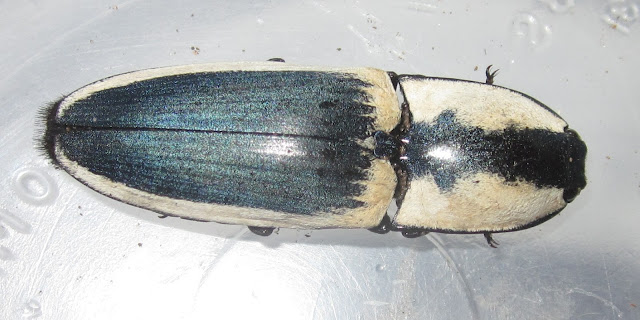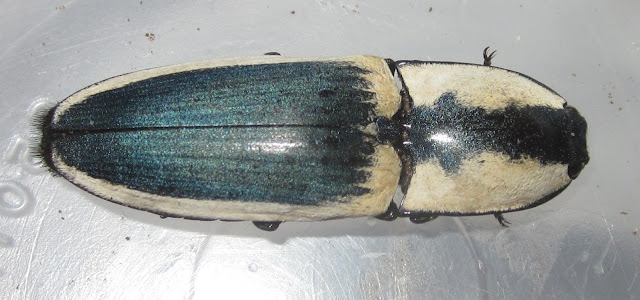Got several Elaterid updates for y'all, so let's get started!
Sadly, my Deilelater cf. atlanticus have proven to be a huge pain. Despite also being kept warmer, only two of mine have matured this year, each several months apart from each other, so no breeding was possible. A couple larvae up and died for no reason too, so I'm down to three large larvae. For whatever reason, the larvae of this species have been extremely slow growing and don't seem to eat much, I've tried a variety of substrate types, food items, humidity and temperature levels/fluctuations, nothing seems to get them growing faster or reliably induce pupation. I doubt I'll be successful in breeding these, and expect the remaining larvae to either pupate sporadically or die within the next several months.
Now for some Chalcolepidius updates. I've had three C.webbii mature so far, all females, and one has already kicked the bucket a virgin (along with a virgin female Alan sent me a month or two ago)... I'm hoping a male the remaining larvae will also start pupating soon, and hopefully a male will pop up in a timely manner. 🙃
Here are some pictures of one of the CB females:
As for my C.smaragdinus, I was surprisingly able to get 4 larvae... which is abysmal from a group of 4 females, but better than nothing (which is what I was expecting). Hopefully I get super duper lucky and end up with a pair, but I'm not holding my breath.
Lastly, some Alaus updates. First, some of my Alaus lusciosus are FINALLY starting to mature. So far I have three fresh adults, and I'm hopeful more will start pupating soon, so fingers crossed I get at least a sexed pair or two to maturity at the same time. 🤞
Here's a crappy phone pic of one of the A.lusciosus CB adults:
Secondly, Brandon sent me six Alaus oculatus larvae, from a female he collected himself from Osceola Mills, PA. So I now have larvae of the most common and widespread Alaus species. 😀
Not only that, but Alan sent me the substrate from his Alaus zunianus bin, which I was able to isolate 30 larvae from. However, they've had some unexpectedly high mortality rates, and so I'm currently sitting at 22 larvae for now. This is the LARGEST US Elaterid, and rarest of the US Alaus spp., so I'm super stoked to finally have a breeding group of larvae to work with, hopefully the mortality rates will go down as they get larger in size! 🤞😅
And finally, Alan also sent me a single mated adult female of Alaus patricus. This strain was collected from Florida, where they are invasive to, this species is actually native to the West Indies. It's an attractive species, quite differently patterned from the US natives. Hopefully she lays lots of eggs for me, fingers crossed!
Here are some pictures of the beauty:
Would love to get larvae from this species, so I'll definitely pamper her and do my best to induce oviposition.
Well, that about does it for click beetle updates. Thanks for reading, hope everyone enjoyed, and I'll see you all next time! 😉













No comments:
Post a Comment